Best Place to Visit in Pokhara, Pokhara is a place filled with beauty and great ambiance. It serves as the gateway to the Annapurna region, where many hikers find their Shangri-La. Pokhara’s captivating beauty has inspired many travel authors.
The pristine air, the stunning background of the Annapurna Range, and the serene Phewa, Begnas, and Rupa Lakes all contribute to this region being recognized as “the Jewel of the Himalaya.”
It is inhabited by extremely friendly and fascinating people and serves as the starting point for treks into the Annapurna Himalaya, which dominates the horizon.
The area around Fewa Tal, the valley’s main lake, began as a trekking destination and has since evolved into the city’s tourist hub.
There are many captivating tourist destinations in Pokhara that one would barely want to miss.
Phewa Lake
Phewa Lake is the Best Place to Visit in Pokhara, Travel to Phewa Lake, Nepal’s largest and, according to some, most beautiful lake. You can go boating on the lake’s calm waters and dine at one of the many restaurants that line the shore.
Phewa Lake is the second largest lake in Nepal. It’s a semi-natural freshwater lake surrounded by a queen’s forest, with a stunning reflection of the Annapurna and Dhaulagiri mountain ranges in the clear lake waters.

It’s also a great place to see the spectacular Himalayan sunrises. A doonga, a colorful boat, may be hired for a leisurely cruise around the lake. The sacred Tal Barahi Temple, which is located on a lake island, has religious significance.
On Pokhara’s eastern side, Baidam, or the lakeside, there are numerous fantastic resorts, restaurants, cafes, and bookshops. Exciting pathways ascend to higher terrain in the densely forested region surrounding the lake.
Begnas Lake
Begnas Lake is 2nd Best Place to Visit in Pokhara, It is Nepal’s third-largest lake and the Pokhara Valley’s second-largest. The largest of the two twins, Begnas, is located to the southeast of the valley.
A dam on the western stream, Khudi Khola, regulates the level of water in the lake, ensuring that enough is available for agriculture in all seasons save the monsoons.
The lake’s wetlands have been converted into lush green rice fields, and fish aquaculture is practiced in some sections. The lake’s waters support a substantial component of the local economy.
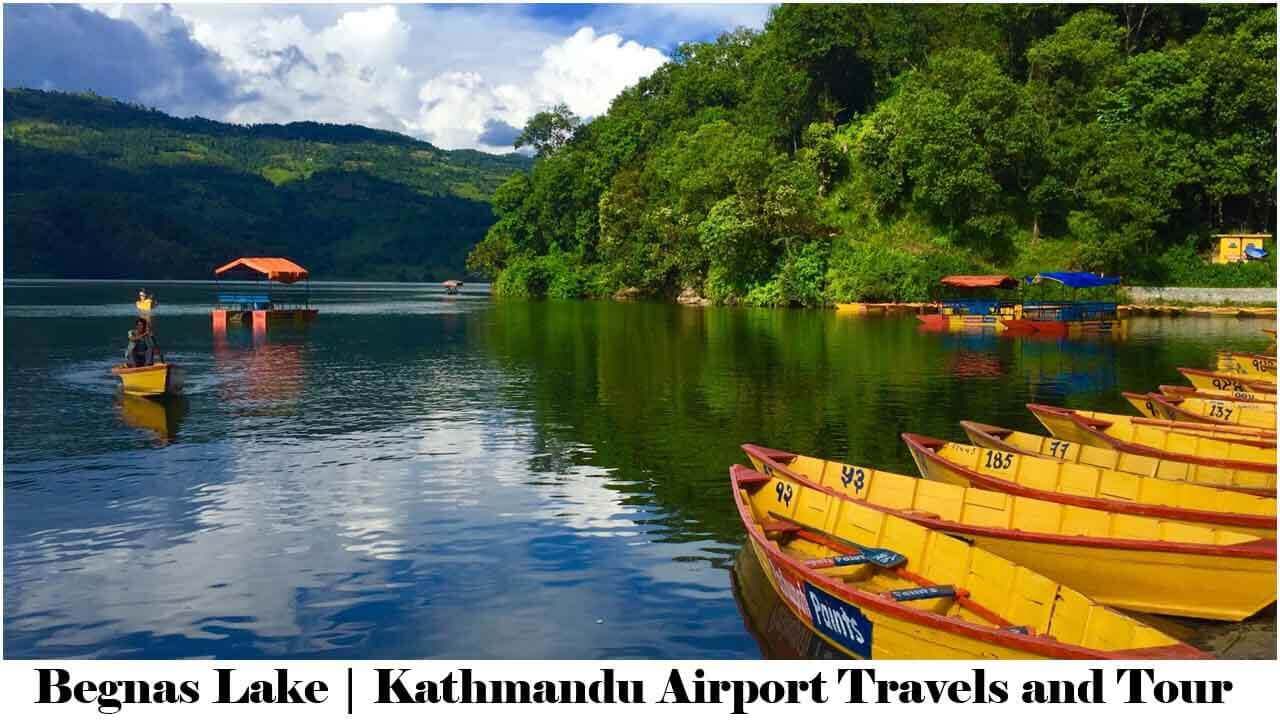
The setting’s breathtaking grandeur makes it a perfect place for relaxation and rejuvenation. A long boat ride or solo kayaking in the lake’s peaceful waters, exploring every corner and crevice while enjoying the majestic snow-dusted Himalayan peaks, are both options.
Begnas lake is home to several resorts and guesthouses where visitors can spend as long as they like to enjoy the fresh air and spectacular views of the valley and the Begnas Tal.
This freshwater lake attracts a great number of people due to its beautiful natural surroundings. On a clear day in the Himalayan foothills, the lake waters reflect the surrounding mountain ranges.
You can unwind or take a leisurely stroll along the riverbank. If you want to get closer to nature and soak up the amazing ambiance amidst dense trees, go to the Begnas Tal in the Pokhara Valley.
Sarangkot
Sarangkot is the Best Place to Visit in Pokhara, A little community with the natural beauty of its own. The nice thing about Sarangkot village is that it is located on the outskirts of Pokhara city.
You will also have the opportunity to see the Annapurna Himalayan range, which is one of the most magnificent in the world. The orange tints can also be seen, as well as some lovely mountain ranges.

The village’s picturesque splendor is what attracts the majority of tourists. It’s also a popular hangout spot for most paragliders.
Sarangkot Hill is well-known for its early vistas of the Annapurna Range and Fishtail Mountain (Machhapuchhare). Seeing the sunrise behind some of the world’s tallest peaks is worth getting up early for, even if you’re not a morning person.
Devi’s Fall
A Swiss couple named Davi visited this beautiful place on July 31, 1961. They had no idea their adventure would take a fatal turn. The overflow drew the woman into a sinkhole where she drowned while bathing in its waters.
Three days later, her body was discovered. At her father’s request, the fall was christened Davi’s Fall. According to some, not only the woman but also her husband drowned.
Devi’s Falls became a local landmark, and therefore the moniker by which it is most commonly known.
Due to its natural phenomenon, Devi’s Waterfall/ Davis Waterfall is unlike any other waterfall in the country. It commemorates the point at which the Pardi Khola stream vanishes underground, leaving no trace of its presence.
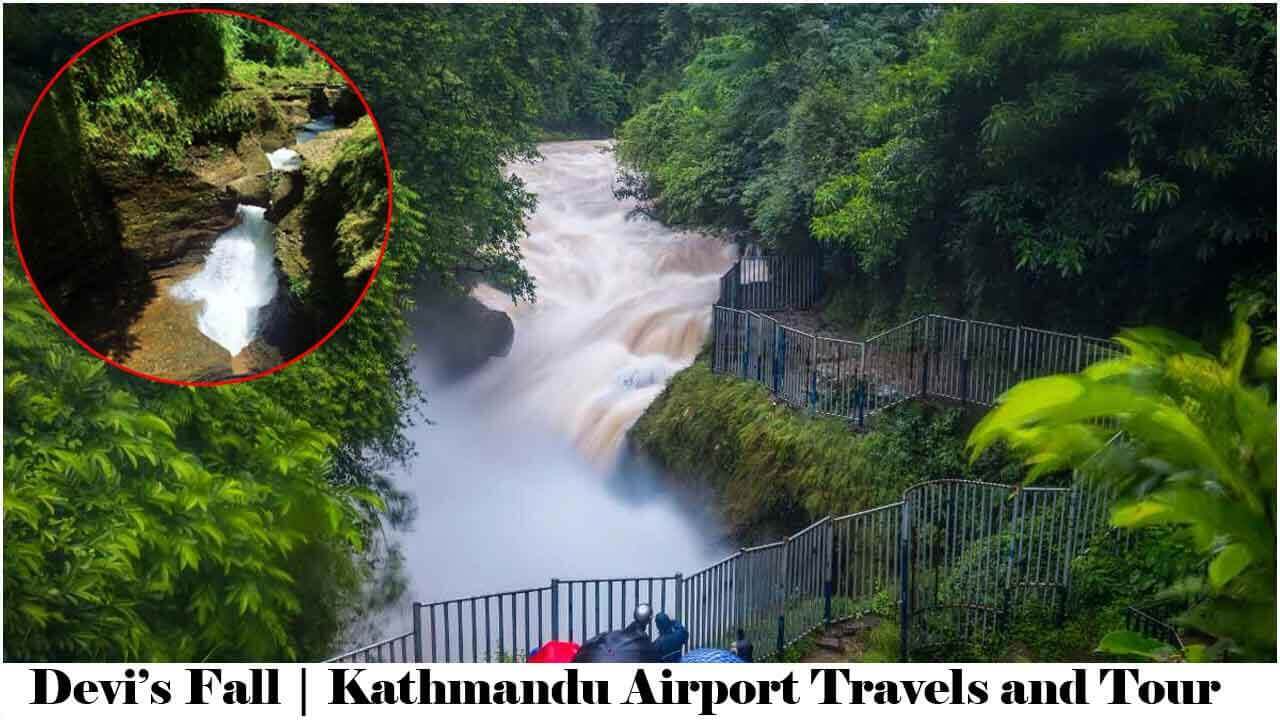
The splashes of water against the boulders provide a spectacular sight when the monsoons are at their peak.
Davis Fall, located near Pokhara, is a spectacular waterfall that cascades into a 500-foot-long underground tunnel. Patale Chango, which means “subterranean waterfall” in Nepalese, is the name given to the fall by this tunnel.
The waterfall is surrounded by lush vegetation and is fed by the Phewa Lake Dam. Devi’s waterfall, a Pokhara landmark, is a must-see for anybody visiting Nepal. As you watch this massive fall struggle with rocks to break free, take in the beauty of nature.
Shree Bindhyabasini Temple
Bindhyabasini temple One of the Best Place to Visit in Pokhara, The Bindhyabasini temple has been a prominent attraction for both Hindus and international tourists since its inception. The ringing of bells, the singing of prayers, and the overwhelming scent of incense transport visitors on a religious journey that is sure to leave an indelible impression.
Bindhyabasini Temple is located on a small hill in Pokhara. This temple is dedicated to Goddess Durga, who is a manifestation of Devi Parvati.
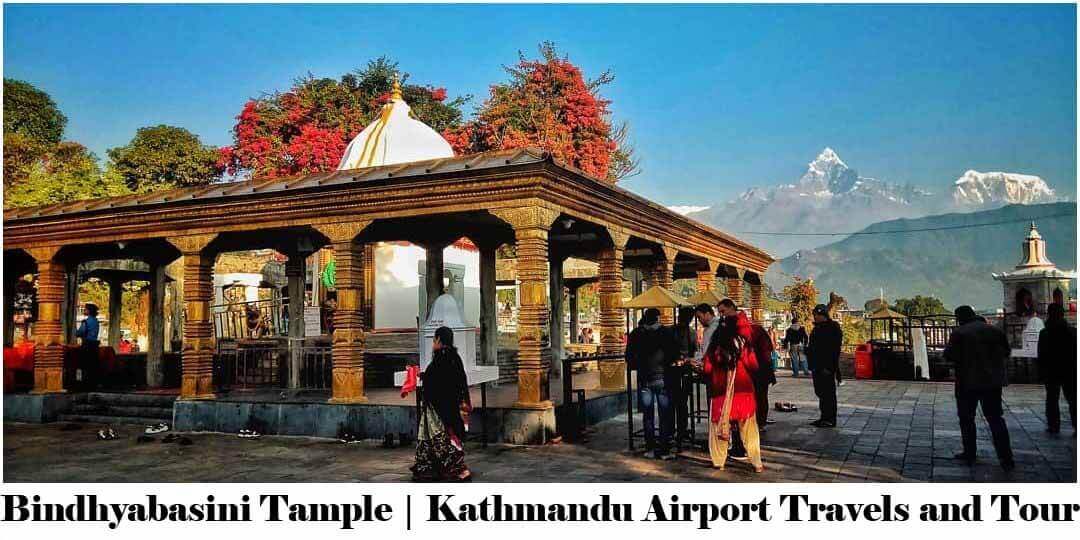
The Goddess is adored in the shape of a Shaligram. According to local legend, the idol was purchased from the Indian state of Bindhyachal by King Siddhi Narayan Shah.
The approach to the Bindhyabasini temple is lined with old communities that resemble Nepal’s traditional Newari architecture. The king of Kaski invited Kathmandu artisans to build exquisite buildings and sculptures in Pokhara in the 17th century.
Some stayed in Pokhara while others returned to Kathmandu. The houses that we see here harken back to ancient times.
During your trip to the Pokhara valley, you might include a visit to the Bindhyabasini temple. You can do souvenir shopping and learn about the culture in these old Newari streets.
Mahendra Cave
Mahendra Cave is the Best Place to Visit in Pokhara, In Pokhara Kaski, Nepal’s second-largest tourist city, the Mahendra cave is the most visited tourist attraction. It’s located near Batulechaur, which is around a 10-minute drive from Pokhara’s main city.
The bat cave is merely a 5-minute walk from the Mahendra Cave, whereas Devi’s Fall is only a 5-8 minute walk away. The cave is packed with limestone that continues to crumble to the surface with the help of water, making the Mahendra cave a beautiful place to come and explore the natural structure and old natural wonders.
Many different rock kinds and stones shimmer when a beam of light is struck in Mahendra cave. This natural feature is designed to be observed rather than being injured by sharp digging equipment.
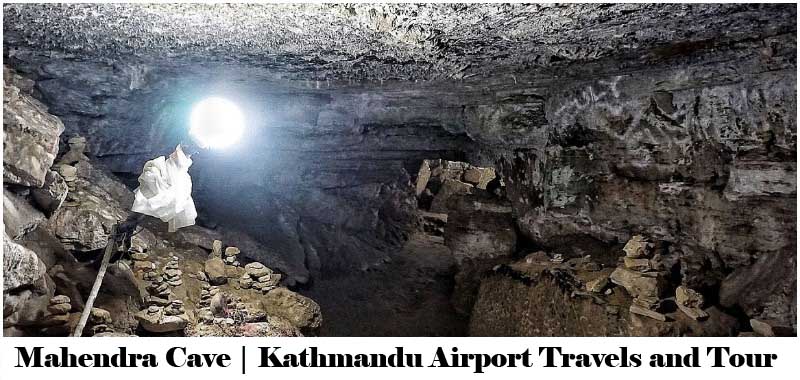
The cave also contains big granite rocks and tunnels that link to various locations, including the Kali Khola (River), though many of the tunnels are currently blocked by massive stones.
A big colony of feral bats has taken up residence in the cave’s dismal ceilings. Inside the cave, there is a statue of Lord Shiva, the Hindu God. Pokhara’s Mahendra Cave is a popular tourist attraction.
The Mahendra cave is accessible ’y foot or by public transportation from Pokhara’s main city. The cave is around an hour and a half away from the Prithvi Narayan bus stop.
If you have enough time and have seen all of Pokhara’s other attractions and are not traveling alone, I recommend walking there on your own to take in the sights of the city, nature, and tourist-infested surroundings.
Chamero Gufa
The Bat’s Cave, also known as the Chamero Gufa, appears to be another popular tourist destination in Pokhara. In the year 2040, the landowner, a farmer, is supposed to find this cave.
As the name implies, this is mostly a limestone cave filled with bats. It is located close to Mahendra Cave. Chamero Gufa is its indigenous name.
Because the tunnel is dark and the road is littered with jagged stones because it is not lit by electricity, the explorers must move with caution.
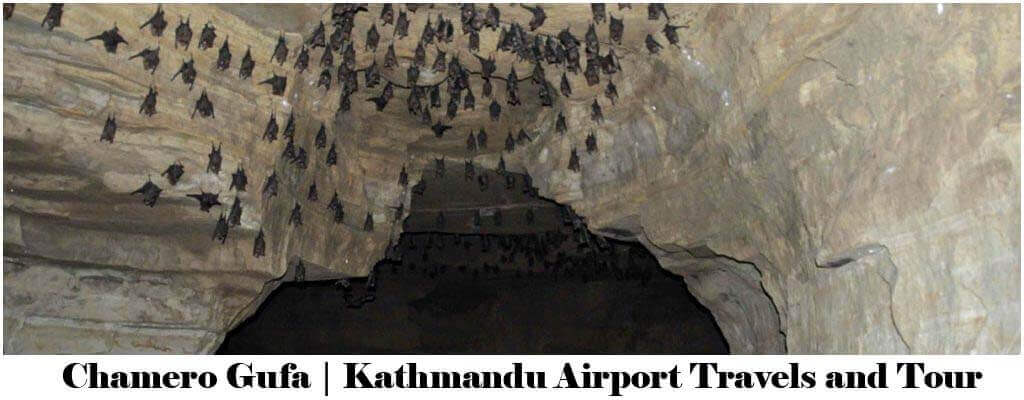
Every approach must be conducted with caution because water regularly seeps through the ceiling, leaving everything wet and slick.
The Chamero Gufa, or Bat’s Cave, is about 4 kilometers from Mahendra-pul in Batulechaur. Microbus service is available on a regular basis from Bazar and other parts of Pokhara. You can also reach there by bicycle, motorcycle, or taxi.
Round leaf and horseshoe bats are the most frequent bats found in this cave. You can get within a foot of them both in various parts of the cave. Proceed with caution, however.
Those places are slippery, and there are no railings. While exploring the cave’s rocky structures, many individuals have been injured. People falling through the cave’s rocks have also been the subject of some terrifying horror stories.
Tal Barahi
Tal Barahi Structure is a two-story pagoda structure on a small island in Phewa Lake in Pokhara, also known as Lake Temple or Varahi Temple. Both Hindus and Buddhists worship Goddess Varahi, who is a manifestation of Goddess Durga. King Kulmandhan Shah is said to have built the temple after having a dream.
The main shrine is built in traditional pagoda architecture with wood, bricks, and stone and has a large enough premise to accommodate a significant number of worshipers.
The location also features comfortable seats where tourists may unwind before returning to the city. Sail to the island and explore when visiting Phewa Lake.
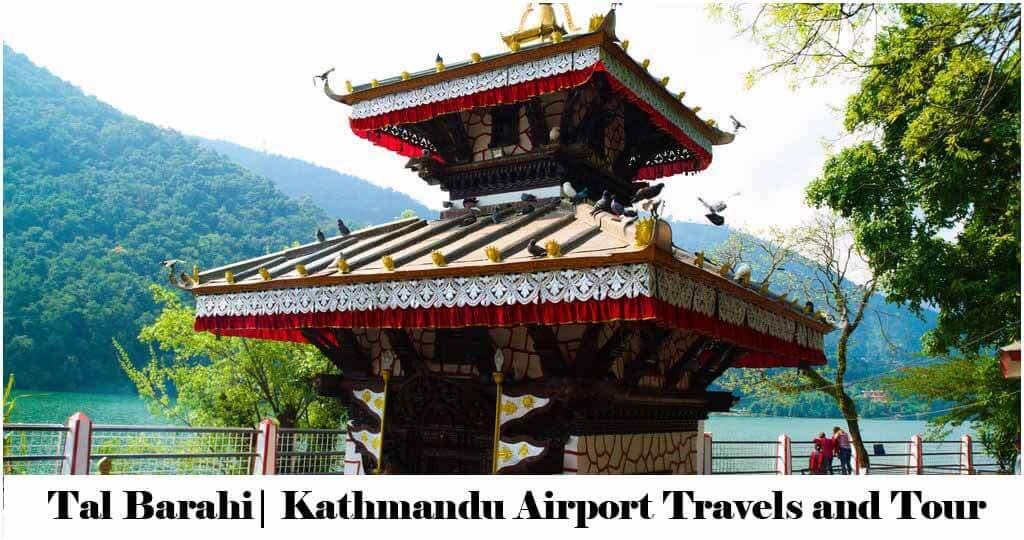
Goddess Varahi is a manifestation of Goddess Durga, who is regarded as a symbol of strength (Shakti). Varahi or Barahi means “boar” in Nepalese. Goddess Durga took on this form in order to defeat the evil spirits.
She is reported to have fought and killed all of the mighty demons with her tusks. She is reported to have visited the Pokhara Valley after the fighting and fallen in love with it, deciding to settle there.
Since then, Nepalese Hindus have adored this powerful incarnation of Goddess Durga. Locals also allege that King Kulmandhan Shah of the Shah Dynasty, an ardent follower of Goddess Varahi, founded the temple.
Rupa Taal
Rupa Lake is a famous tourist destination in Pokhara, with an abundance of boating opportunities. For fish raising, this lake has adopted a cage and pen culture.
The lake reflects the mountains and surrounds them beautifully. Visitors can swim, canoe, or boat around the island, and there is a temple in the center.
Farmers in the Kaski district formed the Rupa Lake Rehabilitation and Fisheries Cooperatives Limited with the primary goal of safeguarding the watershed.
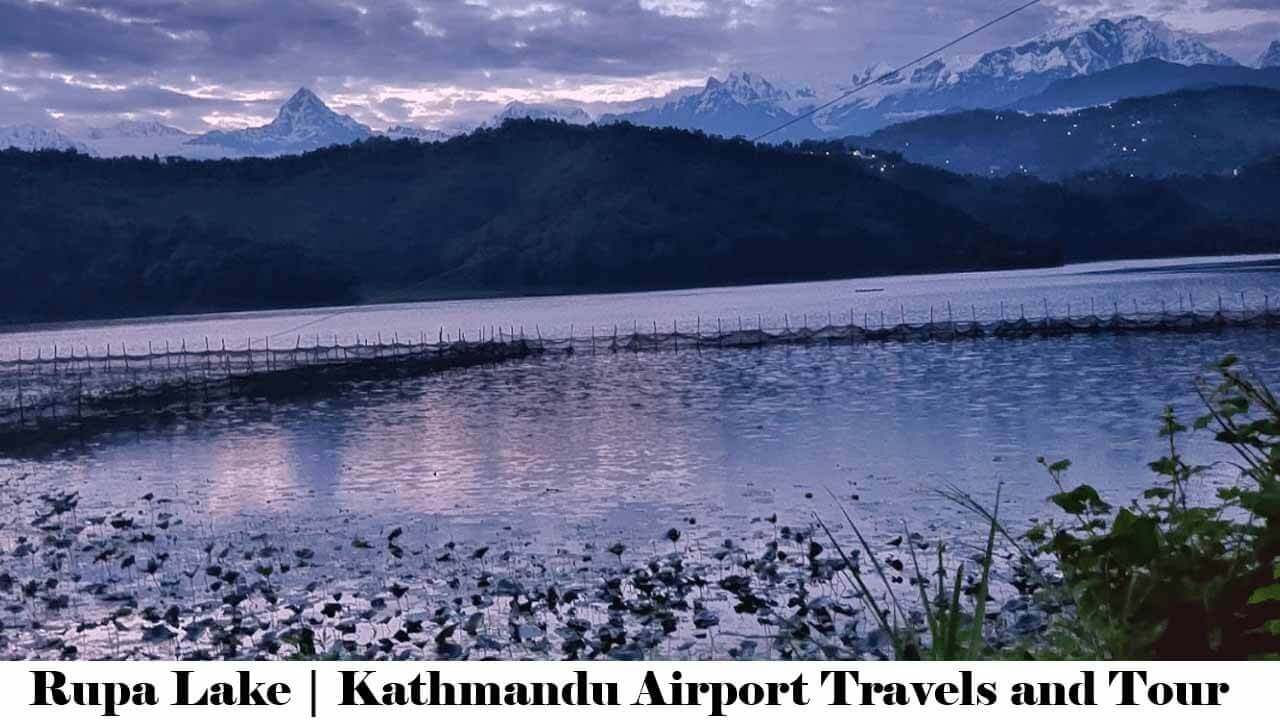
Pokhara’s eyes, located between the Begnas Tal and the Rupa Tal, provide a view of both lakes at the same time. Rupa Lake, lying 600 meters above sea level and covering 1.35 kilometers in the Pokhara-Lekhnath metropolitan municipality, is Nepal’s third-largest freshwater lake.
The lake is nourished by a 30-km2 watershed fed by north-south perennial streams. It is home to a wide variety of floral and faunal species, including 36 waterbird species, which make up 19% of Nepal’s total 193 wetland-dependent birds.
International Mountain Museum
A museum called the International Museum is located in Pokhara, Nepal. The museum is 2 kilometers south of the lakeside in Pokhara.
Driving takes 10 minutes and walking takes 30 minutes. The foundation stone for IMM was laid on December 1, 1995. IMM began operations on May 29, 2002, with a soft launch on February 5, 2004.
The museum’s three main exhibit rooms are the Hall of Great Himalayas, Hall of Fame, and Hall of World Mountains.
Inside the museum, there are exhibits on noteworthy peaks, biographies of famous mountaineers, mountain culture and lifestyle, flora and fauna, and geology, all in an effort to portray the Nepalese people’s traditional culture and values.
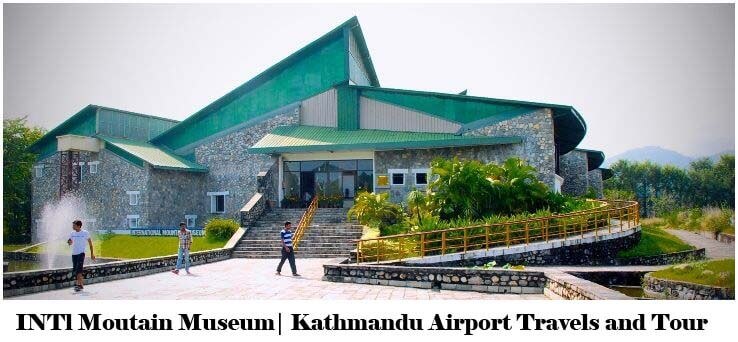
In Pokhara, Nepal, the International Mountain Museum exhibits a collection of artifacts and information concerning life and mountain climbing at elevations of over 12,000 feet.
Every year, almost 70,000 people visit the museum. The exhibits feature world-famous peaks and the mountaineers who climbed them, mountain culture and lifestyle, mountain biology of flora and wildlife, and geologic formations that produced the mountains and their rock strata.
Mountaineering and mountains have a long and distinguished history together. If the records and evidence are not kept, they will be lost forever in no time.
The Nepal Mountaineering Association established the International Mountain Museum in Pokhara on November 1, 1973. This massive museum honors Nepal’s mountains, as well as the mountaineers who have scaled them and the people who live there.
Gupteshwor Mahadev Cave
The Gupteshwor Mahadev cave, located opposite Davis Falls on the other side of the World Peace Stupa in Pokhara, is Nepal’s most famous cave. It is also the longest cave in Nepal (2950 meters).
According to folklore, the cave was found in the 16th century. The main cave entrance was not completed until 1991. There are two chambers in the main cave, each with several shrines.
The largest of these sanctuaries is dedicated to Shiva. Although the cave has lighting with a power backup, you need to carry your own head torch.

Near the caves’ main roadside entrance, there are various gift vendors, but you’ll have to haggle hard because they’re used to day-trippers.
Local men are claimed to have discovered the cave while cleaning some grass in the 16th century. Within the dark cave, they discovered numerous temples and statues dedicated to Shiva and other Hindu deities.
Among them were Mahadev and Parvati, Nageswor, and Saraswati. At the cave’s end, the men discover a waterfall running through it.
Seti River George
The raging Seti River is the Best Place to Visit in Pokhara, Seti River passes through Pokhara, but you won’t notice it unless you look attentively. The river has dug a deep, tight gorge through the heart of town, turning the water milky white in the process.
The greatest site to see the Seti River is near the Gorkha Museum in the park just north of Old Pokhara. The Seti River’s serpentine riverbed and milky white water are well-known.
The torrent carves a deep valley across the Mahabharata range before rushing through a deep fissure in the city’s core. The gorge may be seen from a park near the Gorkha Museum in Old Pokhara.
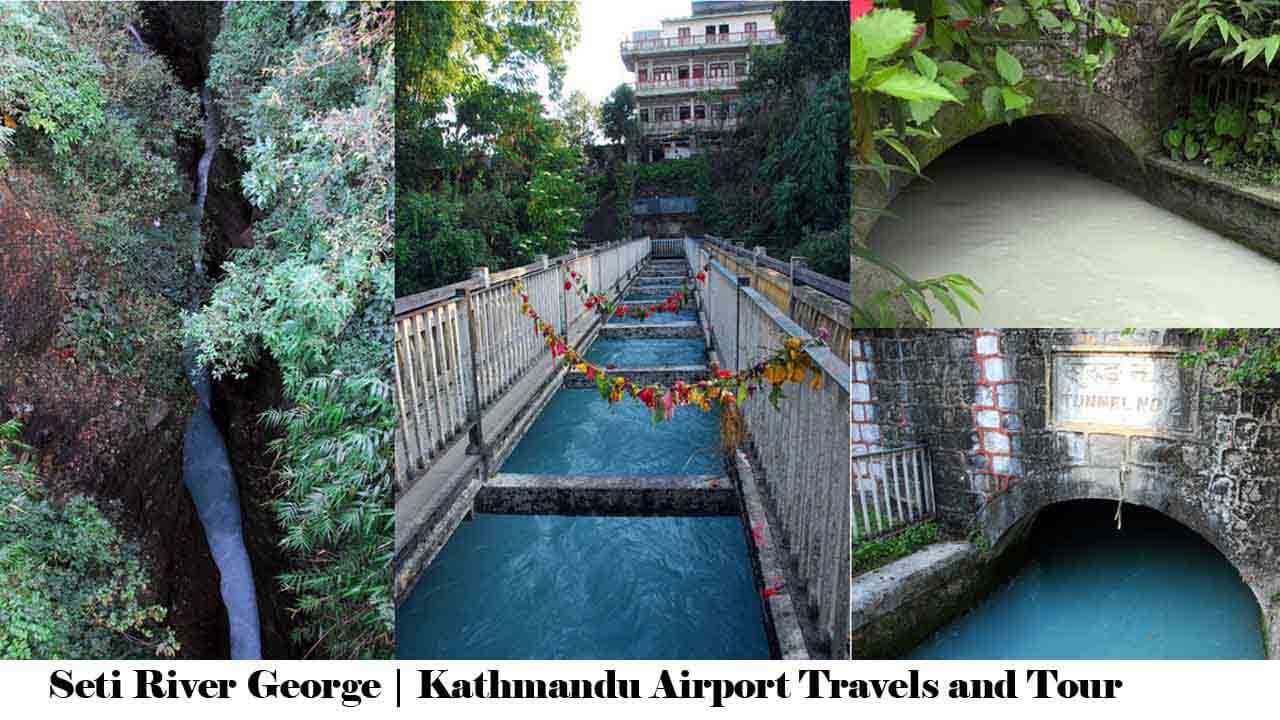
However, the most picturesque gorge in the Himalayas can be found on the West Seti River between Simikot and Chainpur.
After crossing Chaupha La in cold conditions last month, we traveled a trail traditionally utilized by traders to Tibet and pilgrims to the holy Lake Mansarovar.
According to simple input-output analysis, a road here would not only be environmentally and culturally detrimental, but it would also be economically unviable.
The cost of construction and maintenance will be in the billions, far beyond any cash generated by pilgrims. In fact, as has been shown throughout Nepal, the road would not reduce the cost of essentials but will increase consumerism, bring trash, and drive young people away.
Matepani Gumba
Migrants from Manang created Matepani Gumba in 1960 AD. Gumba is a small mountain on the eastern borders of Pokhara City.
The magnificent architecture and scenic backdrop of valleys and mountains are the most stunning aspects of this monastery. The remarkable wall art of this monument will catch the interest of art lovers.
While visiting one of Pokhara’s most exceptional tourist attractions, you can spend time with the monks and experience their warm hospitality.

Matepani Gumba’s intricate interior with beautiful hues in the painting that signifies and represents many instances of Buddha’s life and various legends that make up the Buddhist faith will leave you speechless.
The majestic statue of Lord Buddha, as well as other 11-foot-tall statues, will undoubtedly attract your attention. The Gumba is accessible by a short hike.
The walk will be worthwhile since you will be greeted with a stunning vista of Pokhara and Mt Machapuchare from the summit of the green slope (Mt Fishtail).
Once you arrive, you will be greeted by kind monks who will provide a warm welcome to all visitors to their monastery.
Pokhara Shanti Stupa
Shanti Stupa, also known as Peace Pagoda, is a lovely edifice built atop Anadu Hill in Pokhara, overlooking the lovely Phewa Lake and the Annapurna Mountain range in the distance.
It is a well-known tourist destination, as well as a stunning landmark and a convenient rest stop for adventurous climbers. Phewa Lake and the Himalayas are accessible via a number of trekking trails in the vicinity.
A ride up one of the pathways leading to the summit of the hill, a drive to the Stupa, or a scenic drive through the area are all options. The panoramic beauty of the monument is captivating, and people seeking peace should pay it a visit.
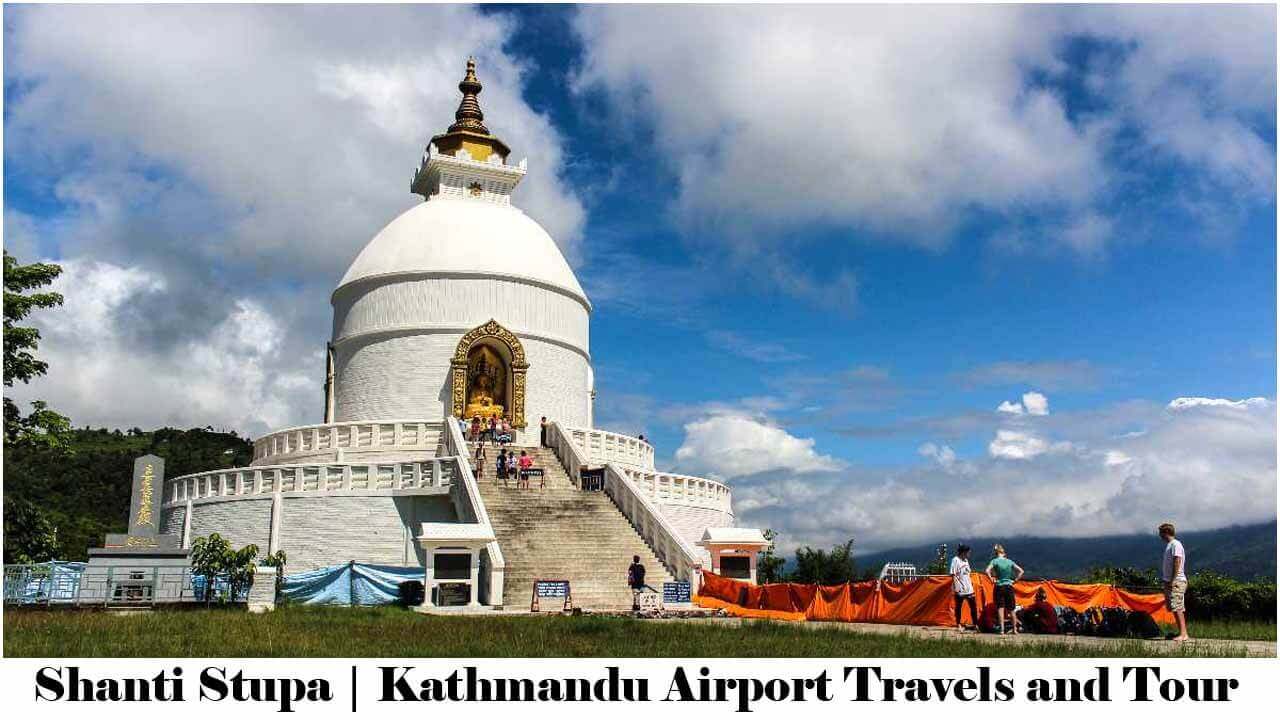
From here, you can see the Himalayan range, Phewa Lake, and Pokhara city. Many people come to see the beautiful sunrise and sunset. The Stupa is 7 kilometers from Pokhara.
The Peace Pagoda can be reached in a variety of ways. Hiking and cycling are both permitted on the paths. Traveling via cab is also an option.
Peace Pagodas can be found all throughout the world, including this temple. Following WWII, Japanese Buddhist monks embarked on a mission to build Peace Pagodas all over the world. This is one of Nepal’s two World Peace Pagodas, the other being in Lumbini. These sacred temples are universal peace symbols.
Seti Gandaki Gorge
The Seti Gandaki is the Best Place to Visit in Pokhara, carved by Seti, and is one of Pokhara’s natural beauties. The river’s awful rush and the deep valley created by the tumultuous flow of white water like milk can be seen from the KI Singh Bridge in Bagar, Mahendra Pool, and Prithivi Highway Bridge near Bus Park.

The West Seti Gorge, on the old commerce and pilgrimage route to Tibet, is one of Pokhara’s natural beauties, cut by the Seti-Gandaki. The river’s awful rush and the deep valley created by the tumultuous flow of white water like milk can be seen from the KI Singh Bridge in Bagar, Mahendra Pool, and Prithivi Highway Bridge near Bus Park.
FAQ’s Best Place to Visit in Pokhara
Which is the Beautiful place of Pokhara?
The old Pokhara Bazaar is a must-see. This historic market is also a bustling meeting spot for a diverse range of vendors. The temples and monuments in the bazaar are eerily similar to Kathmandu Valley Newari architecture.
The Bindhyabasini Mandir, a white dome-like edifice atop a hill, is one of Pokhara’s most important shrines and is located in the historic market.
What are the visiting places in Pokhara?
The best Place to Visit in Pokhara are Phewa lake, rara lake, begnas lake, Mahendra cave, sarankot, chamero Gufa Devi’s falls, etc.
Why is Pokhara famous for?
Pokhara is famous for its scenic beauty and the great ambiance of the place.
What special things is in Pokhara?
The special things in Pokhara are its beauty that awes the people and also the cultural heritage and traditions

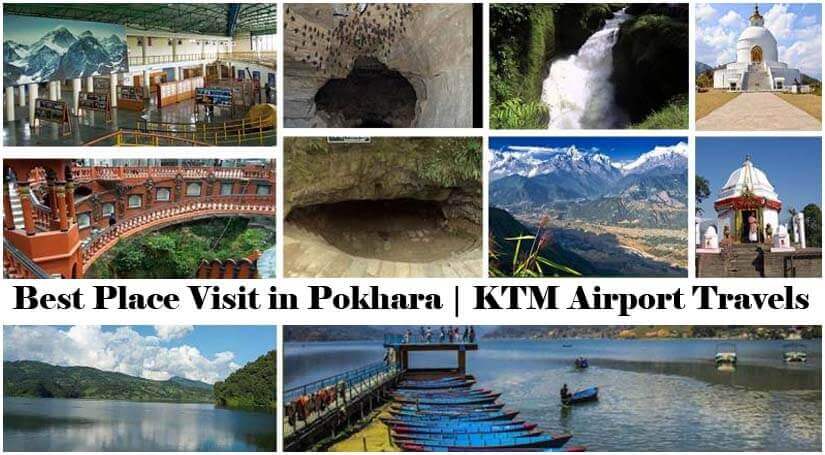


2 Comments
[…] Best Place to Visit in Pokhara | KTM Airport Travels […]
[…] Ghale Gaun, a lovely hill town in western Nepal, is located in the Lamjung district, about 205 kilometers to the northwest of Kathmandu and 125 kilometers to the northeast of Pokhara. […]